What is Shear Lug?
A Steel Base Plate Shear Lug is a steel embedment used as a part of an anchorage that transfers shear loads from the structural components to a concrete substrate through different mechanical interactions.
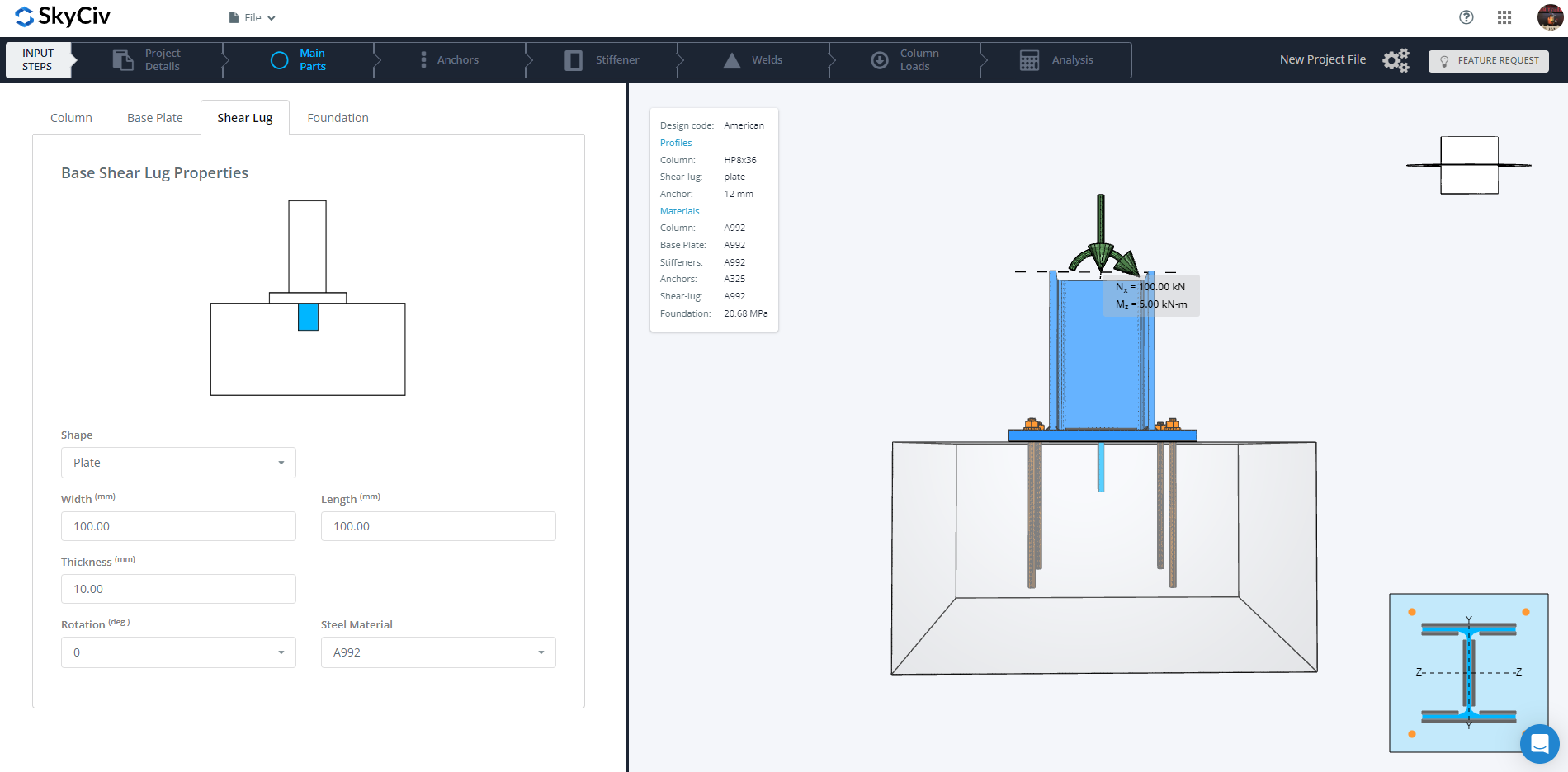
Figure 01: SkyCiv Base Plate Shear Lug User Interface
According to AISC Design Guide No. 1, the high shear load transfer can be designed into two components (illustrated in Figure 02).
- Shear Lug
- Column Embedment
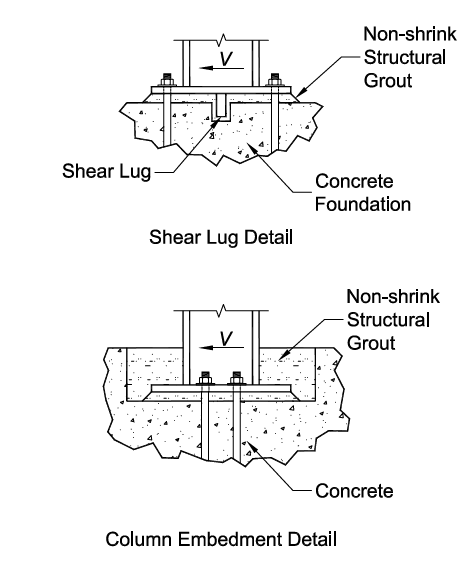
Figure 02: Transfer of base shears through bearing (Image obtained in AISC DG No. 1)
Why is a Shear Lug is Needed?
- Shear lugs are commonly used in an anchorage if the anchor bolts cannot bear the shear load of the structure since anchor bolts can only tolerate small to moderate shear loads;
- Without a shear lug, the number of anchors needed in order to transfer the shear load is uneconomical, and;
- Another method of transferring high shear load is needed.
Compared to an anchor bolt, it can be seen in Figure 03. Due to the shear lug having a rectangular cross-section with flat surfaces, the load transmission of shear forces is more effective compared to the usage of anchor bolts.

Figure 03: Comparison of stress distribution of an anchor bolt and lug
Types of Shear Lugs
In ACI (American Concrete Institute), two types of shear lugs are described as follows:
- Cast-in-place shear lugs which are cast into the concrete and;
- Post-installed shear lugs which are grouted into a keyway in the concrete.
The general provisions of designing shear lugs require a minimum of four anchors to be provided in the anchorage. The provisions also specify that the shear lug is assigned to the entire shear demand of the structure hence the failure due to the shear of the anchor bolts would not need to be checked.
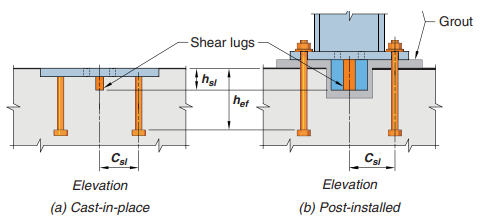
Figure 04: Types of Shear Lugs Welded into a Base Plate (image from ACI 318-2019)
Shear Lug Provisions
ACI 349-01
General Provision
In General Provision of ACI 349-01 Section B.11, design shear lugs strength shall include consider the following:
- Bearing strength of the concrete or grout placed against the shear lugs
- Direct shear strength of the concrete or grout placed between shear lugs and the confinement afforded by the tension anchors in combination with external loads acting across potential shear planes.
- Shear loads toward free edges and displacement compatibility between shear lugs shall also be considered.
- When multiple shear lugs are used to establish the design shear strength in a given direction, the magnitude of the allotted shear to each lug shall be in direct proportion to the total shear, the number of lugs, and the shear stiffness of each lug.
Shear Toward the Free Edge
Under provision ACI 349-01 Section B.11.2 for Shear toward the free edge, the parameters are as follows:
- For shear lugs bearing toward a free edge, unless reinforcement is provided to develop the required strength, the design shear strength for each lug shall be determined based on a uniform tensile stress of \( 4 \phi \sqrt{f_{c}} \) acting on an effective stress area defined by projecting a 45-degree plane from the bearing edges of the shear lug or base plate to the free surface.
- The bearing area of the shear lug or plate edge shall be excluded from the projected area.
- The \( \phi \) factor shall be taken as 0.85.
Shear Strength of Embedment with Embedded Base Plates
Under provision ACI 349-01 Section B.11.3 for Shear strength of embedment with embedded base plates, the following shear-friction coefficients:
| INPUT | LFRD |
|---|---|
| Base plate without shear lugs | 0.9 |
| Base plate with shear lugs that are designed to remain elastic | 1.4 |
ACI 318-2019
In the General Provision of ACI, 318-2019 the design of shear lugs is permitted in accordance with sections 17.11.1.1.1 through 17.11.1.1.9.
- A minimum of four anchors are to be provided in the anchorage when the shear lug is considered.
- Check for bearing failure in accordance with Section 17.11.2
- Check for concrete breakout failure in accordance with Section 17.11.3
Concrete Bearing Strength
Factored concrete bearing strength of the shear lug is determined according to ACI 318-19 – 17.11.2 as
\( \phi V_{brg,sl} = \phi 1.7 f_{c} A_{ef,sl} \psi_{brg,sl} \rightarrow \) equation 17.11.2.1
where:
- \( \psi_{brg,sl} \) – Bearing factor.
- For applied axial tension = \( 1.0 + \frac{ P_{u} }{ n N_{sa} } \le 1.0 \)
- For no applied tension = 1.0
- For applied axial compression \( 1.0 + 4.0 \times \frac{ P_{u} }{ A_{bp} f^{‘}_{c} } \le 2.0 \)
- \( A_{ef,sl} \) – Effective bearing area.
Concrete Breakout Strength
The factored concrete breakout strength of the shear lug is determined according to ACI 318-19 – 17.11.3 as
\( \phi V_{cb,sl} = \phi \frac{ A_{Vc} }{ A_{Vco} } \psi_{ec,V} \psi_{ed,V} \psi_{c,V} \psi_{cp,V} V_{b} \rightarrow \) equation 17.6.2.a
SkyCiv Shear Lug Feature
The Steel Base Plate Design calculates the shear lug to transfer the high shear force from the anchor as shown in Figure 01. Computes the following:
- Bearing the force of the concrete in contact with the lug
- Shear Capacity in accordance with Design Code
Further Shear Lug design checks can also be completed with the SkyCiv Shear Lug Calculator.
Where Shear Lug can be found
To include the shear lug into the base plate element and analysis. the user shall click the following Main Parts → Shear Lug → Shape → Select “Plate” as shown in Figure 05.
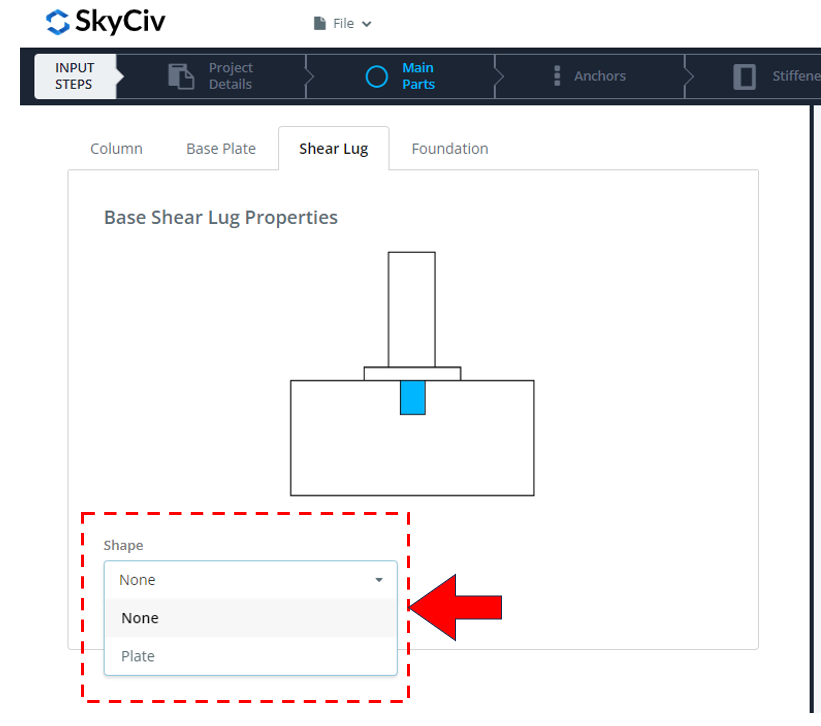
Figure 05: Shear Lug Options in SkyCiv Base Plate Module
Design Report
SkyCiv Steel Base Plate Design shows the details calculation report for the shear lug as illustrated in Figure 06.
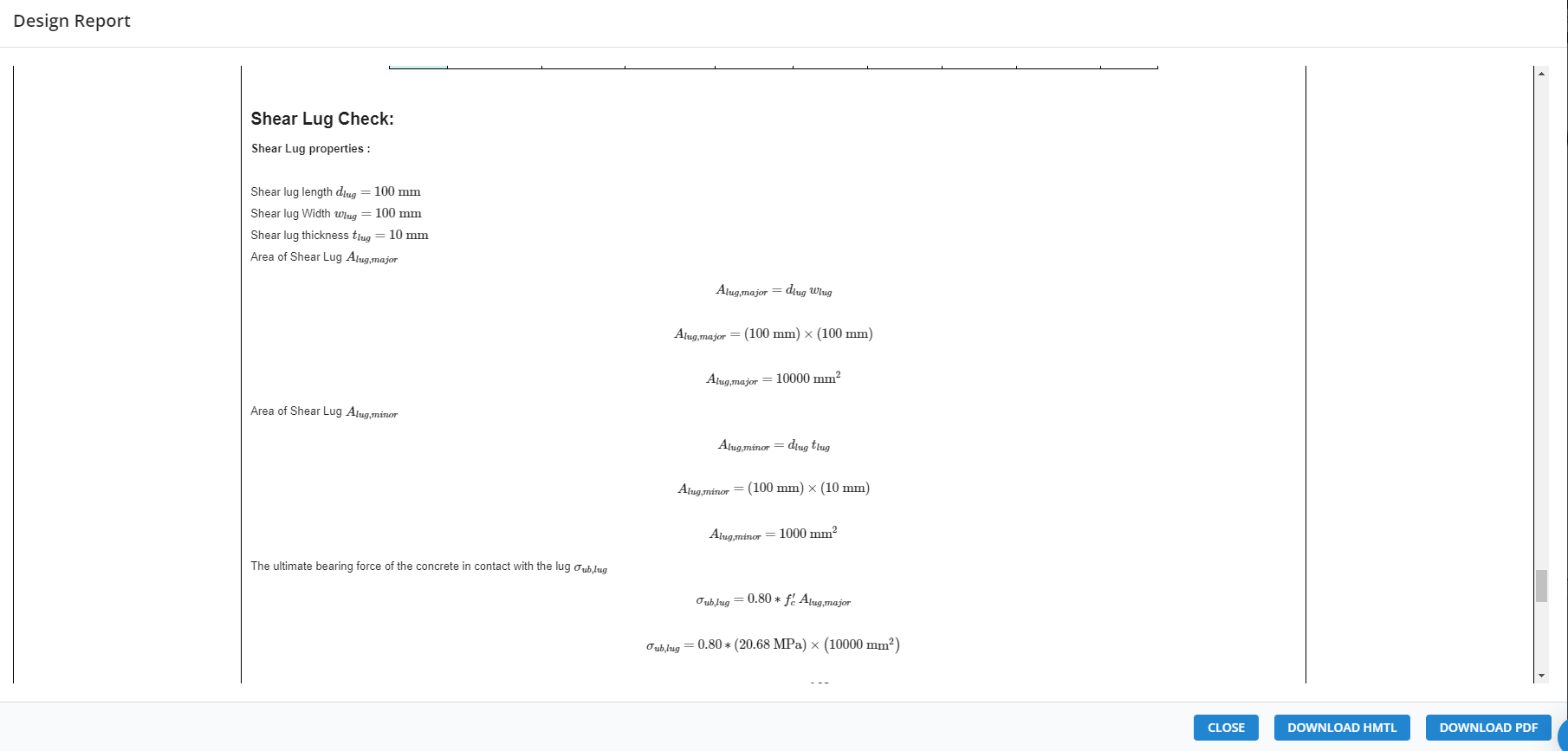
Figure 06: Shear Lug Detailed Report
Design Summary
Figure 07 illustrates the Summary Results including the Shear Lug Checks.
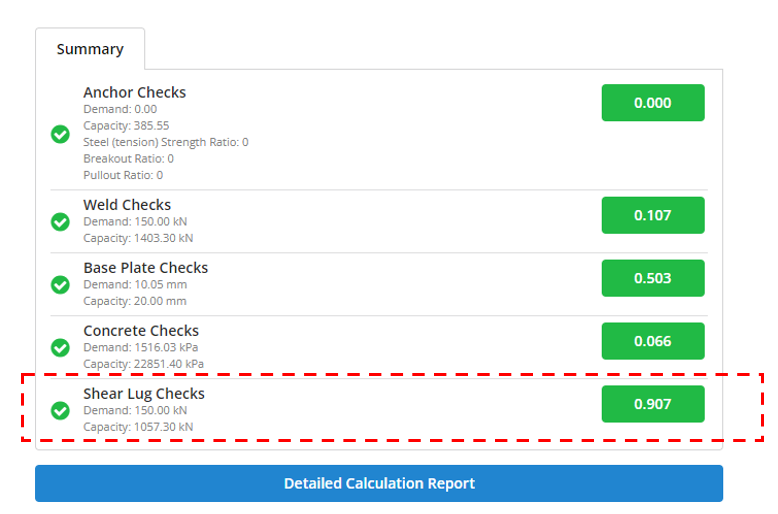
Figure 07: Design Summary with Shear Lug
Reference:
(1) Behaviour and design of anchors and anchorages with supplementary reinforcement. Akanshu Sharma. (2020, February 19).
(2) Carrato, P. J., & Reifschneider, M. (2009). Use of shear lugs for Anchorage to concrete. Volume 2: Structural Integrity; Safety and Security; Advanced Applications of Nuclear Technology; Balance of Plant for Nuclear Applications. https://doi.org/10.1115/icone17-75175
(3) ACI 318-19 Building Code Requirements for Structural Concrete
(4) AISC 360-16 Specification for Structural Steel Buildings
(5) ACI 349-01 Code Requirements for Nuclear Safety-Related Concrete Structures


